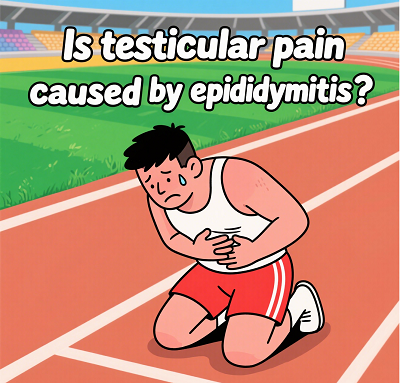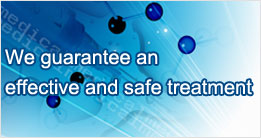Is Your Testicular Pain During Exercise Due to Epididymitis—Or Something More Serious?
James, a 28-year-old marathoner, had to stop the race and go to the hospital as a safety precaution after suddenly experiencing persistent throbbing pain in his left testicle after the halfway point of one of his races last week. The doctor's diagnosis is - that epididymitis caused by the pain is very likely, but there is no guarantee that there are no other factors at the same time influence.

Testicular pain during sports is never a trivial matter! Although epididymitis is a common cause, specific movements while running or lifting weights are more likely to induce complications such as varicose veins or even testicular torsion, which can aggravate the condition. However, in addition to epididymitis, there are other causes that can and do lead to testicular pain during exercise, which need to be analyzed on a case-by-case basis.
Common Causes of Testicular Pain During Exercise
When testicular pain occurs during exercise, it is often difficult for patients to determine the cause on their own. In most cases, the pain is the result of epididymitis, but other problems cannot be ruled out. According to sports medicine observations, there is a characteristic etiological distribution of pain caused by different sports. By understanding the characteristics of these different etiological factors, it is possible to develop strategies to alleviate the symptoms effectively.
1. Epididymitis
Bacterial Epididymitis: Mostly caused by urinary tract infection. Patients experience severe pain due to increased pressure in the testicles as a result of increased abdominal pressure when lifting weights; the pain is also exacerbated by continuous jolts when running.
Non-bacterial Epididymitis: Prolonged cycling, repetitive jumping, or heavy deep squatting training may lead to impaired pelvic blood circulation, triggering chemical inflammation. This type of pain usually appears gradually hours after the end of the exercise and manifests itself as persistent pain.
2. Varicocele
This is one of the most common causes of testicular pain among weightlifters. Holding your breath while lifting weights increases the abdominal pressure, which directly hinders venous blood return, leading to venous plexus dilatation and bruising. The patient's pain is mostly scrotal swelling, like a “bag full of water.” If the patient stops exercising and lies down, the pain will be slowly relieved.
3. Testicular Torsion
Although its incidence is low, it is the most dangerous sports-related urological emergency. Commonly, in basketball turn, gymnastics landing or weightlifting sudden force and other rotary explosive action. The pain is characterized by a sudden “tearing” pain, often accompanied by nausea and vomiting.
4. Other Causes
In addition to the above causes, lumbar nerve root compression and other conditions may also be the cause of testicular pain during exercise.
How to Prevent Epididymitis
1. Lifestyle Modifications
Maintain regular urination and defecation to minimize the risk of retrograde bacterial infection; and keep bowel movement smooth and do not exert excessive force during defecation to prevent pelvic congestion.
Pay attention to sexual behavior management, and avoid frequent sexual stimulation or excessive sexual intercourse to reduce genital congestion.
Pay attention to cleanliness and timely urination after sexual intercourse.
Patients should pay attention to avoid local pressure, choose breathable cotton underwear, and avoid sitting for a long time (more than one hour need to get up and move around).
2. Dietary Management
Patients should avoid stimulating foods such as chili and alcohol, as they will directly stimulate the vas deferens, inducing congestion and pain.
Patients should increase their intake of anti-inflammatory foods, such as more tomatoes (rich in lycopene), deep-sea fish (rich in omega-3 fatty acids), and pumpkin seeds (zinc), which can effectively inhibit inflammatory factors.
3. Exercise Safeguards
Patients should avoid cycling or compression exercises, and switch to low-impact exercises such as swimming and brisk walking, which can reduce perineal compression on the patient.
Cold compresses are also effective after exercise. Cold water sitz bath for 10 minutes can prevent patients from congestion after exercise.
How to Treat Pain Caused by Epididymitis
Medications: Antibiotics like cefixime or levofloxacin can be prescribed by a doctor if a bacterial infection is confirmed.
Anti-inflammatories: Over-the-counter medications like ibuprofen can help reduce pain and swelling.
Traditional Chinese Medicine: The Diuretic and Anti-inflammatory Pill, formulated with natural herbs known for their heat-clearing, anti-inflammatory, and pain-relieving properties, can be used to address both the symptoms and root causes of epididymitis.
If you experience testicular pain during or after exercise, don’t ignore it. Seek timely medical evaluation to determine the exact cause and initiate appropriate treatment. Early prevention, tailored therapy, and proper exercise habits can make all the difference.



